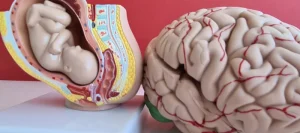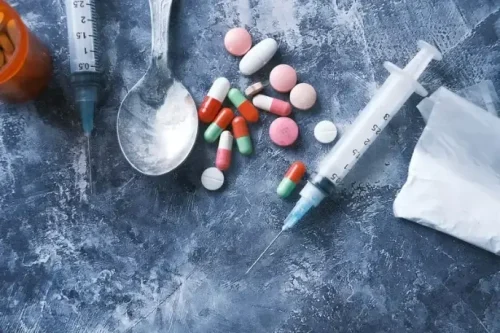
While receiving treatment, healthcare providers will want to monitor you continuously to make sure you don’t develop life-threatening complications. If you feel that you sometimes drink too much alcohol, or your drinking is causing problems, or if your family is concerned about your drinking, talk with your health care provider. Other ways to get help include talking with a mental health professional or seeking help from a support group such as Alcoholics Anonymous or a similar type of self-help group. A common initial treatment option for someone with an alcohol addiction is an outpatient or inpatient rehabilitation program.
- Addiction is a complex, chronic brain condition influenced by genes and the environment that is characterized by substance use or compulsive actions that continue despite harmful consequences.
- In addition, alcohol inhibits the excitatory effect of glutamate in the brain, preventing it from binding in the synapse.
- Rather than using the term “addiction,” the DSM-5 classifies substance use disorders.
- Five ounces should be a standard glass of wine according to health experts.
Take the First Step
A wine addiction isn’t always easy to spot, but if someone is struggling with wine use, it might save their lives to offer them support. Alcohol is a central nervous system depressant, which affects vision, coordination, judgment, ability to multitask, decision-making and reaction time. The short-term effects of wine use often vary based on how much a person drinks, but they also vary based on age, weight, height, and gender.
How Does Addiction Develop in the Brain?

But severe or complicated alcohol withdrawal can result in lengthy hospital stays and even time in the intensive care unit (ICU). Alcohol withdrawal (alcohol withdrawal syndrome) is a range of symptoms that can happen if you stop or significantly reduce alcohol intake after long-term use. It typically affects people with alcohol use disorder (AUD). The owner is Arlindo Madeira, Professor at the Tourism and Hospitality Management School in Lisbon, with whom we later developed the idea. Why would we do this outside of the usual laboratory environment? We wanted to study the recreational use of alcohol in a natural environment.

Strategies for Balancing Early Recovery with a Serious Relationship
- Binge drinking involves a pattern of short but heavy bursts of alcohol use.
- Although the awareness of time diminished, in retrospect time was felt as passing more slowly.
- The gist being that if you expect wine (or any drink) to make you feel a certain way, it probably will because you‘re expecting it to.
- We are dedicated to transforming the despair of addiction into a purposeful life of confidence, self-respect and happiness.
Congeners are chemical byproducts of the fermentation process that give wine and other alcoholic drinks their flavor. They’re found in higher concentrations in darker drinks, including red wine. It was written based on peer-reviewed medical research, reviewed by medical https://ecosoberhouse.com/ and/or clinical experts, and provides objective information on the disease and treatment of addiction (substance use disorders). Since wine is a socially accepted form of enjoyment in many cultures, it can be difficult to determine whether one has a problem.
Regardless of how the addiction looks, someone typically has an alcohol addiction if they heavily rely on drinking and can’t stay sober for an extended period of time. Regardless of what it does to your appetite, though, drinking wine every day probably won’t be very kind to your bowel movements. In my experience, they were looser and more watery—and even a darker color than usual. Over time, your brain’s structure and function change, leading to tolerance, meaning you may require higher amounts of alcohol to achieve the desired effects.
- Alcoholic blackouts happen when you consume too much alcohol too quickly.
- Digestive problems and liver disease are also potential long-term health risks that binge drinkers face.
- The analysis doesn’t prove that white wine causes melanoma; rather, it suggests an association between white wine consumption and the risk of developing the disease.
- Some wine is made using pomegranate, strawberry, honey or rice.
- You also can’t be expected to constantly monitor their decisions.
Try to make those types of activities take a backseat to other hobbies. Watching a friend or family member struggle with a binge-drinking habit can be difficult, is wine addictive even heart-wrenching. You’ll likely be there to witness their most reckless behavior, painful hangovers, and their sense of shame and depression afterwards.

If identified and treated early, someone with an alcohol addiction may be able to avoid major consequences of the disease. It can cause changes to the brain and neurochemistry, so a person with an alcohol addiction may not be able to control their actions. As individuals continue to drink alcohol over time, progressive changes may occur in the structure and function of their brains.
Alcohol withdrawal symptoms may start as early as eight hours after a person’s last drink and can last for several weeks. Individual withdrawal symptoms vary based on a person’s age, the amount of wine consumed and their gender. Any alcohol is dangerous when used, whether it’s liquor, beer, or wine. With alcohol use, a person isn’t necessarily addicted to the drug, but it still causes major problems in their life. Abusing alcohol can result in physical, mental and spiritual distress as well as problems at work, home or school.

Individualized, evidence based treatment, to fit your needs.
The symptoms can range from mild to severe, with the most severe being life-threatening. If you have no family history of melanoma and none of the other risk factors mentioned above, I wouldn’t worry too much about any increased risk from drinking white wine. To put this new finding in perspective, bear in mind that if the normal risk of a disease were 1 in 1,000, a 13 percent increase would only raise it to 1.13 in 1,000. If your pattern of drinking results in repeated significant distress and problems functioning in your daily life, you likely have alcohol use disorder.


